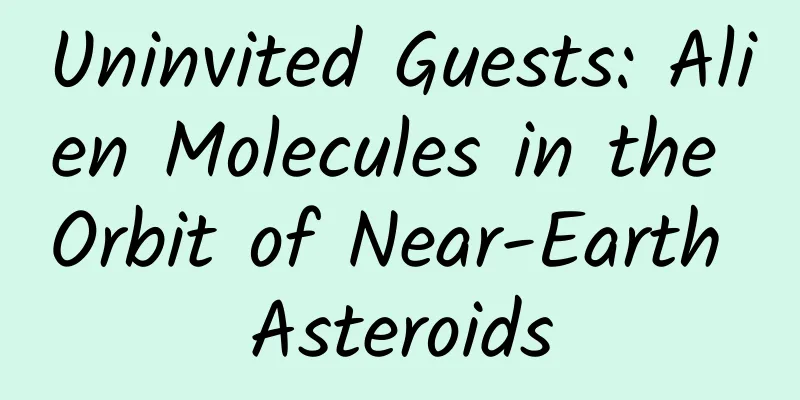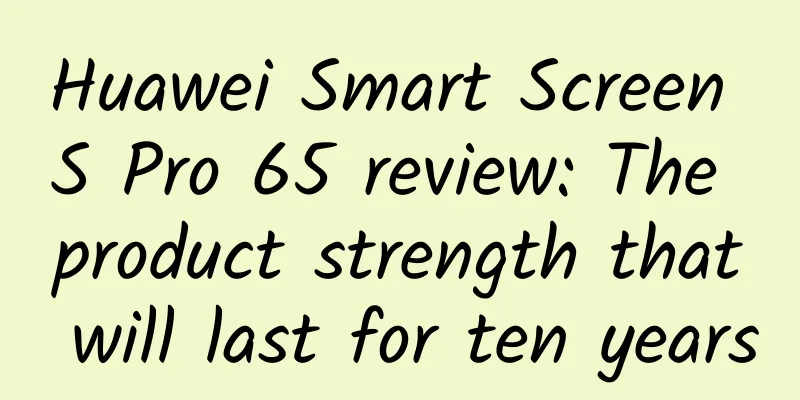Uninvited Guests: Alien Molecules in the Orbit of Near-Earth Asteroids

|
We know that in addition to the eight planets, there are also asteroids and comets ranging in size from meters to hundreds of kilometers in the solar system. We collectively call them small solar system bodies. Up to now, nearly 1.2 million small solar system bodies have been discovered (most of which have not been observed to be active and are classified as asteroids), and the number is still increasing year by year. Orbital distribution of currently discovered asteroids in the inner solar system | Source: Author Most asteroids are located in the asteroid belt between Mars and Jupiter, called main-belt asteroids. Generally speaking, these lovely asteroids will safely orbit the sun in their own elliptical orbits, but there is always a certain probability of collision and the generation of a large number of fragments with different orbits. In addition, under the gravitational disturbance of large planets and complex thermal physical effects, the orbits of asteroids may migrate, or even migrate to near-Earth space. Astronomers classify asteroids with a perihelion distance less than 1.3 au (au is an astronomical unit, the average distance between the sun and the earth) as near-Earth asteroids. Compared with main-belt asteroids, near-Earth asteroids are probably not so cute, because their orbits change more dramatically and frequently during evolution, and may even intersect with the Earth's orbit and pose a risk of colliding with the Earth (those with a diameter of more than 140 meters and a minimum intersection distance with the Earth within 0.05 au are called potential threatening near-Earth asteroids, and 2,275 have been discovered so far). Therefore, astronomers from all over the world are very concerned about near-Earth asteroids. Orbital distribution of potentially threatening near-Earth asteroids discovered so far | Source: Author Recently, on March 11, 2022, a near-Earth asteroid numbered 2022 EB5 was observed two hours before falling into the Earth's atmosphere. Fortunately, this asteroid was only about 1 meter in size and burned up after entering the atmosphere, which gave us a false alarm. The orbit of 2022 EB5 before it hit the Earth (in order to better reflect the three-dimensional effect, the perpendicular line of the asteroid's orbit to the ecliptic plane is drawn) | Source: astorb.com Because near-Earth asteroids can pose a potential security threat to the Earth, accurately measuring and predicting their orbits is an important research topic. However, this aspect is not the subject of this article. This article mainly aims to lead some interested readers to understand the orbital configuration of near-Earth asteroids, especially some strange and interesting cases. In fact, astronomers have classified near-Earth asteroids into four categories based on their elliptical orbit semi-major axis, perihelion distance, and aphelion distance: Amor, Aten, Apollo, and Atina. We will not expand on these categories here, and interested readers can find out the differences by searching Baidu. This article focuses on some interesting near-Earth asteroids with extreme orbital characteristics or special orbital geometry. 2017 UR52 - Three records: flattest orbit, longest period, and greatest aphelion distance First, let's take a look at a near-Earth asteroid 2017 UR52 that broke three "world records". The asteroid is about 200 meters in diameter and was discovered by the Catalina Sky Survey on October 29, 2017. When it was discovered, the asteroid was close to reaching perihelion, with a heliocentric velocity of 37 kilometers per second. The orbital period of 2017 UR52 exceeds 5,000 years, making it the near-Earth asteroid with the longest orbital period (meaning the largest semi-major axis) discovered so far. In addition, the eccentricity of the asteroid reaches 0.9957, making it the near-Earth asteroid with the flattest orbit discovered so far. Finally, based on its largest semi-major axis and largest eccentricity, it can be inferred that it is also the near-Earth asteroid with the largest apogee discovered so far, reaching 584 au, which is 19 times the average orbital radius of Neptune. In fact, the orbit type of 2017 UR52 is similar to that of a long-period comet, but since it was not found to be active when it arrived near perihelion, it was not classified as a comet. Schematic diagram of the orbit of the near-Earth asteroid 2017 UR52 | Source: astorb.com 2005 HC4 - two records: shortest perihelion distance and fastest run 2005 HC4 is a near-Earth asteroid discovered by the Lowell Observatory on April 30, 2005, with a diameter of about 250 meters. The asteroid has a large eccentricity of 0.961 and a perihelion of 0.071 au, making it the near-Earth asteroid with the smallest perihelion distance discovered so far, 0.23 times the distance between Mercury and the Sun (imagine how hot it is at perihelion). Considering its semi-major axis of 1.821 au, it can be calculated that its speed at perihelion is 157 kilometers per second, making it the near-Earth asteroid with the fastest instantaneous speed in a heliocentric orbit discovered so far. Schematic diagram of the orbit of the near-Earth asteroid 2005 HC4 | Source: astorb.com 2021 PH27 - shortest orbital period In contrast to 2017 UR52, the near-Earth asteroid 2021 PH27 (about 1 km in diameter) discovered on August 13, 2021 has the shortest orbital period, with a semi-major axis of 0.462 au, an eccentricity of 0.712, and an orbital period of only 0.314 years. This asteroid is completely within the Earth's orbit, so it is also called an intra-Earth asteroid. However, from the perspective of Earth observers, due to the small relative angle between the asteroid and the Sun, there are relatively few opportunities to observe it. Generally, it can only be observed near dawn or dusk when the asteroid reaches near aphelion and the Earth happens to be in the right position. Schematic diagram of the orbit of the near-Earth asteroid 2021 PH27 | Source: astorb.com "Storm Retrograde" - Retrograde Near-Earth Asteroid We know that most of the large planets in the solar system have an orbital inclination close to 0° and revolve around the sun in a "prograde" manner. This phenomenon is related to the fact that most of the matter was concentrated in the protoplanetary disk when the solar system was formed in the early stage. Most of the near-Earth asteroids also revolve in a "prograde" manner (orbital inclination is less than 90°), but there are still a small number of near-Earth asteroids that have an orbital inclination greater than 90° under complex mechanisms, which are called "retrograde" near-Earth asteroids. Currently, there are five known near-Earth asteroids of this type: 2014 PP69 (inclination 93.7°), 2017 UR52 (inclination 108.3°), 2019 EJ3 (inclination 139.8°), (343158) Marsyas (inclination 154.4°) and 2020 BZ12 (inclination 165.5°). Some studies have shown that the 3:1 orbital resonance between asteroids and Jupiter (i.e., the ratio of the orbital period of Jupiter to that of asteroids is 3:1) may be the cause of the formation of such asteroids. Some scholars also believe that retrograde near-Earth asteroids are related to the orbital evolution of high-eccentricity comets. In fact, in addition to near-Earth asteroids, the total number of other types of retrograde asteroids discovered in the solar system has reached 122. These "retrogrades" have attracted great interest from researchers in the field of celestial mechanics, and they have conducted a variety of studies on the origin and migration mechanism of their orbits, orbital lifespan, and distribution characteristics. Schematic diagram of the orbit of the near-Earth asteroid 2020 BZ12 | Source: astorb.com "Inward"/"outward" type near-Earth asteroids Next, let's consider two types of near-Earth asteroids with somewhat special orbital geometry: "inscribed" and "exscribed" near-Earth asteroids. The "inscribed" or "exscribed" here refers to the Earth's orbit, that is, the aphelion or perihelion of the asteroid's orbit is tangent to the Earth's orbit (the aphelion distance or perihelion distance is between 0.983 and 1.017 au). For example, (325102) 2008 EY5 and (100085) 1992 UY4 belong to the former and the latter respectively. Although they seem to be very "beautiful" in terms of orbital geometry, they are potential threats to the safety of the Earth. Considering the case of eccentricity greater than 0.2, the number of "exscribed" near-Earth asteroids discovered so far has reached 2,319, while the number of "inscribed" near-Earth asteroids is only 66, the former is 35 times the latter. Such a huge difference in number is related to their actual number distribution, but it may also be related to the "selection effect" in observation. Schematic diagram of the orbit of the near-Earth asteroid (325102) 2008 EY5 | Source: astorb.com Schematic diagram of the orbit of the near-Earth asteroid 1992 UY4 | Source: astorb.com 2016 HO3 - Earth's "quasi-satellite" If the orbital period of a near-Earth asteroid is very close to that of the Earth, that is, it forms a 1:1 orbital resonance, it is called an Earth-co-orbital asteroid. Since the Earth's orbit has a certain eccentricity, its angular velocity around the Sun is not constant; and considering that the orbit of an asteroid often has a certain eccentricity, this ultimately leads to the fact that the motion of the asteroid relative to the Earth may appear to be cyclical in the Sun-Earth rotating coordinate system. If the center of this cycle is just near the Earth (if the center is located at the Sun-Earth trigonometric libration point about 60 degrees before and after the Earth's orbit, the asteroid is called an Earth "Trojan" asteroid), then from the Earth's perspective, the asteroid is "orbiting" the Earth. This type of small celestial body is called an Earth "quasi-satellite" type near-Earth asteroid. This is because this phenomenon is mainly an effect of orbital geometry, and its actual distance from the center of the Earth is much larger than the Earth's gravitational range. Therefore, it is not like the Moon, which really orbits around the Earth under the control of the Earth's gravity. Five "quasi-satellite" asteroids have been discovered so far. The most famous one is (469219) Kamoʻoalewa (or 2016 HO3), which is about 40 meters in diameter. This asteroid is the target of my country's future deep space exploration. According to the plan, it will land on the asteroid and collect research samples and bring them back to Earth. 2016 HO3 has the best orbital stability among the five quasi-satellites discovered so far. It is expected to remain a "quasi-satellite" in the next 300 years and still be in the same orbit with the Earth in the next 1 million years. Figure Schematic diagram of the orbit of the near-Earth asteroid 2016 HO3 in the next 100 years in the Sun-Earth rotating coordinate system | Source: astorb.com 2020 CD3——"Mini Moon" If a near-Earth asteroid enters the Earth-Moon system at a relatively low speed, it may be captured by the Earth-Moon system and become a natural satellite of the Earth. However, since the orbital energy of the captured asteroid is still relatively large, it will generally escape the gravitational pull of the Earth-Moon system as time goes by. Therefore, such asteroids can only be considered temporary satellites of the Earth. 2020 CD3, discovered by the Catalina Sky Survey on February 15, 2020, is one of these near-Earth asteroids (estimated to be only about 3 meters in diameter). Through orbital tracing calculations, it was found that the asteroid was captured by the Earth-Moon system around September 2017, then orbited the Earth in a complex gravitational environment, and left the Earth-Moon system in May 2020. After its discovery, the asteroid aroused great public interest and was once called the Earth's "mini moon." The orbital motion of 2020 CD3 (purple) after being captured by the Earth (blue dot), with yellow representing the lunar orbit. | Image source: wikipedia 2010 TK7 and 2020 XL5 – Earth Trojan Asteroids On the Earth's orbital plane, the position that is co-orbital with the Earth and located 60° before and after the Earth is called the Sun-Earth triangular libration point (or the Sun-Earth Lagrange L4, L5 point). If an asteroid reciprocates near the Sun-Earth triangular libration point, such an asteroid is called an Earth Trojan asteroid. Compared with the Sun-Jupiter triangular libration point, the stability of the Sun-Earth triangular libration point is poor, so generally speaking, it is difficult for an asteroid to stay there for a long time. People once thought that there were no Trojan asteroids similar to Jupiter on Earth, until October 2010, when the US WISE space telescope discovered an Earth Trojan asteroid for the first time near the L4 point - 2010 TK7, which is about 300 meters in size. Studies have shown that 2010 TK7 may have been "captured" near the Earth's L4 point about 1,800 years ago, and may have migrated to the L5 point 15,000 years later, or it may have "escaped" and no longer become an Earth Trojan asteroid. Schematic diagram of the five Sun-Earth Lagrange points, with L4 and L5 points located 60° in front of and behind the Earth respectively. | Source: Wikipedia The search for Earth Trojan asteroids has not stopped. In 2017, the US OSIRIS-REx and Japan's Hayabusa 2 asteroid probes searched the Earth's L4 and L5 regions during their flights, but unfortunately found nothing. Fortunately, ten years later, on December 12, 2020, the US Pan-STARRS program discovered the second Sun-Earth L4 asteroid: 2020 XL5, which has a larger diameter of 1.2 kilometers. Orbital calculations show that the asteroid was "captured" as an Earth Trojan asteroid about 500 years ago, and will leave its current orbit in 4,000 years. Compared with other types of near-Earth asteroids, these two Earth Trojan asteroids pose a much smaller threat to Earth's security. At least there is no need to worry about them hitting Earth in the next few thousand years. However, in science, this type of asteroid has received considerable attention because their unique dynamic characteristics can help us provide key clues to the early formation history of the solar system. In addition, some scholars have also noted that due to the good accessibility of low-inclination Earth Trojan asteroids, they can become space bases for exploring the solar system and may even be the target of space resource development. The orbit of the asteroid 2010 TK7 in the Sun-Earth rotating coordinate system | Source: Wikipedia In summary, we note that the orbits of near-Earth asteroids are indeed bizarre. Research on their orbital characteristics, orbital origins, and evolution can help us better understand the dynamic environment during the formation of the solar system, and also help humans study how to defend against near-Earth asteroids that threaten the safety of the Earth. References: 1. https://www.minorplanetcenter.net/ 2. https://academic.oup.com/mnras/article/462/4/ 3441/2589984 3. http://trs-new.jpl.nasa.gov/dspace/bitstream/2014/ 31429/1/95-1108.pdf 4. https://academic.oup.com/mnras/article/446/2/ 1867/2893013 5. https://central.bac-lac.gc.ca/.item?id=TC-BVAU-37251&op=pdf&app=Library&oclc_number=1033018583 6. https://astronomical.fandom.com/wiki/2020_CD3 7. http://www.astorb.com About the Author Hu Shoucun Associate researcher at the Planetary Science and Deep Space Exploration Laboratory, Purple Mountain Observatory, Chinese Academy of Sciences. Research area: Dynamics and formation and evolution of small solar system bodies. Rotating Editor-in-Chief: Wang Ying Editor: Wang Kechao |
>>: Why do I feel sleepy when reading?
Recommend
How did the "wings" of spacecraft come from? Read the aerospace story of solar cells in one article
People who are interested in aerospace are very f...
Are you a master programmer or a novice programmer?
[[131541]] "Rookie" and "Master&qu...
TSMC will continue to supply Huawei. Taiwanese media: No fear of the US
The U.S. Department of Commerce has included Hua...
The "Spring Limited" delicacies that you can't miss, take your taste buds on an outing!
Eat the taste of spring and enjoy the scenery of ...
Li Deren and Xue Qikun won the 2023 National Highest Science and Technology Award! A quick look at the winners of the National Highest Science and Technology Award
The 2023 National Highest Science and Technology ...
iOS 15.6 official version battery life test is out, it consumes more power
Last week, Apple pushed the official version of i...
Information flow oCPC: Spent hundreds of thousands of dollars with no effect?
I saw a question: It said that someone invested i...
From 0 to 1 million users, three tricks to retain users
User retention is a difficult problem that every ...
ODG: Augmented reality glasses of the future
Facebook spent $2 billion to acquire virtual real...
What are the shooting techniques for Tik Tok short videos? Vertical shooting techniques for Tik Tok short videos!
Many people asked me how to do traffic matrix man...
618 sprint! How to increase brand transactions on Xiaohongshu?
The 618 promotion has entered the sprint period, ...
iOS 15 Private Relay feature early test: still affects network speed
At this year's WWDC, Apple introduced a featu...
Which Google products have more than 1 billion users?
[[153365]] Do you want to know how big Google has...
Douyin Promotion and Operation丨How to write a Douyin title that gets over 10,000 likes?
When it comes to new media, the first thing that ...









